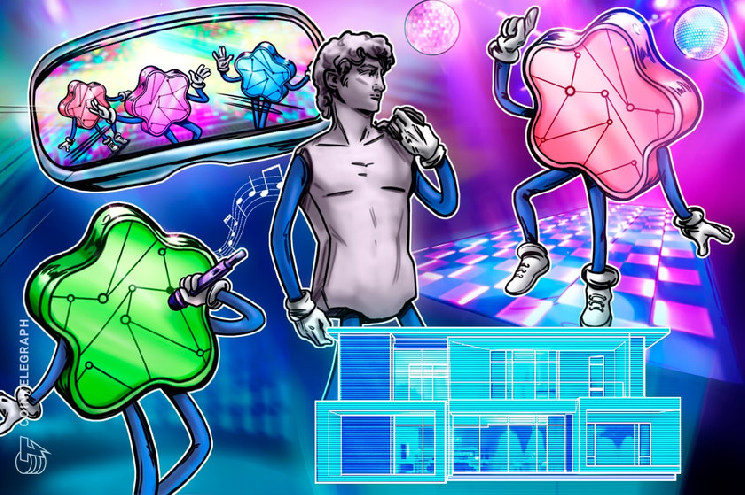NFTs have changed our understanding of digital assets since they gained more mainstream attention in recent years. With this, the relationship between NFTs and physical assets has also emerged as an intriguing and innovative use case for this technology.
Unlike cryptocurrencies like Bitcoin or Ethereum, which are fungible and can be exchanged on a one-to-one basis, NFTs are unique digital tokens that represent unique items or assets. While NFTs are primarily associated with the digital space, they can also be linked to physical assets through tokenization, bridging the gap between the virtual and physical worlds. This connection has introduced new capabilities and use cases for NFTs that extend beyond the digital domain.
Simply put, tokenization occurs when assets are represented by digital assets on the blockchain (such as when that NFT represents a physical asset). When an NFT is representative of a physical item, it means that the NFT serves as proof of ownership for that physical item. Typically, the physical asset can be any uniquely valuable item, such as works of art, real estate, luxury goods, collectibles, or even event tickets.
The NFT associated with the physical asset contains information and metadata that uniquely identifies it, including details about the asset’s origins, authenticity, ownership history, and more. This can help combat counterfeiting, protect intellectual property rights and ensure assets are traceable throughout their life cycle.
There are several additional benefits associated with this, including fractional ownership. This is when multiple individuals have the opportunity to own a share of the asset by purchasing a fraction of the NFT. This increases its accessibility and diversification, as people with limited capital can participate in owning valuable assets that would otherwise have been out of their financial reach.
Fractional ownership also improves the liquidity of traditionally illiquid assets because it facilitates the creation of secondary markets where investors can buy and sell fractional ownership interests. This provides an opportunity for liquidity and potentially greater market depth for these assets.
Some physical assets can also be bundled with additional benefits or privileges that are then linked to the corresponding NFT when the assets are tokenized. Just this year, Mastercard debuted a free Music Pass NFT drop that offered collectors a variety of benefits, including an AI-powered music generator app, educational materials, and access to a virtual showcase featuring artists in the company’s Artist Accelerator program, which created a new dimension. of ownership and interaction. Features like these can increase the value of the NFT and make it more attractive to the average consumer.
The relationship between NFTs and physical assets has given rise to ready-made concepts such as ‘phygitals’. They combine the physical and digital worlds to create interactive and immersive experiences and offers for NFT holders. Imagine: you own an NFT of a limited edition fashion item and the NFT unlocks a physical version of that item. This is exactly what Nike has done.
In 2019, the sneaker empire unveiled a patent for blockchain-based sneakers. Delving deeper into phygital experiences, Nike subsequently acquired NFT sneaker studio RTFKT Studios, leading to the launch of Nike’s metaverse sneaker line. Purchasing one of these NFTs will not only let you wear your digital sneakers in the metaverse, but you’ll also get your own physical pair to wear in the real world. These types of offers provide unique opportunities for user engagement and interaction.
There is significant potential and a promising future in NFTs that represent physical assets. It is still a relatively new concept, but it has already proven its worth and attracted the attention of collectors, investors, industries and brands, such as Gucci, Adidas, Dolce & Gabbana and Tiffany. NFTs democratize access to ownership and investment in physical assets. When you purchase an NFT tied to a real-world physical asset, it can enhance the ownership experience by providing unique digital experiences and additional benefits.
NFTs can contain smart contracts, allowing automatic royalty payments to creators and original owners when the NFT is sold or traded on the secondary market. This ensures continued recognition and compensation for creators and encourages the production of high-quality digital and physical assets. Smart contracts can enforce predetermined conditions, reducing the risk of disputes and ensuring fair compensation.
However, challenges and complications remain when integrating NFTs with physical items. There are questions around legal frameworks, regulatory compliance and intellectual property rights (if not using smart contracts) that need to be addressed to provide a solid, secure and standardized environment for NFTs representing physical assets. Ensuring seamless transferability and liquidity of NFTs and their corresponding physical twins will also require the development of efficient and consumer-friendly NFT marketplaces.
NFTs have not only revolutionized the digital asset landscape but have also expanded their reach into the world of physical assets. By tokenizing physical assets, NFTs offer new possibilities for ownership, investment, and engagement. The connection between NFTs and physical assets bridges the virtual and physical worlds, enabling new experiences and benefits for collectors, investors and enthusiasts.
As technology continues to develop and mature, the relationship between NFTs and physical assets is expected to grow and continue to provide new avenues for custody, creativity, interaction and value exchange.
Anthony Georgiades is the co-founder of Pastel Network.
This article was published through Cointelegraph Innovation Circle, a vetted organization of senior executives and experts in the blockchain technology industry who are building the future through the power of connections, collaboration and thought leadership. The opinions expressed do not necessarily reflect those of Cointelegraph.

